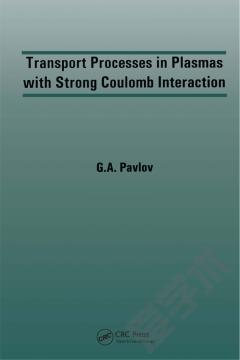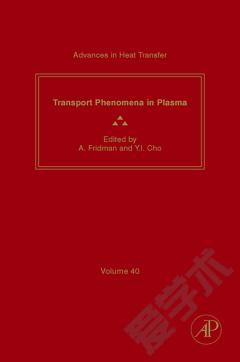Transport Processes in Multicomponent Plasma
This book treats in detail, as indicated in the title, the transport phenomena in multicomponent plasmas. Here, the term `transport' applies to the study of mass and energy transfer in plasmas due to the interactions between pairs of particles only. Radiation is legitimately omitted; anyway, radiative transfer is another field of study. As the author himself mentions in the introduction, `the term multicomponent plasma implies a partially or fully ionized mixture of arbitrary number of species of neutral and charged particles satisfying the condition of quasi-neutrality'. In fact, this book treats a large variety of plasmas applying to different systems ranging from low-pressure systems which may be far from local thermodynamic equilibrium (LTE) conditions, to thermal plasmas in LTE or near-LTE states with special attention to two-temperature systems; partially ionized plasmas with low ionization degree for which electron-neutral interactions are predominant, to systems with higher ionization degrees in which charged particle interactions are no more negligible. In addition, for all the above stated situations, the author treats both plasmas which are subjected to an external electromagnetic field and those which are not (homogeneous and inhomogeneous cases). Furthermore, in the last chapters a special discussion concerning molecular plasmas is presented. Taking into account the evolution of plasma modelling in the last few years, the subject is of current interest and the reader will find in the book a large amount of information necessary for a good understanding of transport phenomena in plasmas: for a plasma simulation specialist, this book may be regarded as reference text, which includes all necessary mathematical relations for his work. However, it should not be considered a simple formulary; the reader will also find here an excellent description of the theoretical basis necessary for the derivation of all given expressions. To this point of view this book, at least the first few chapters, may be used as a very good complement to other textbooks for plasma physics Masters students (or even PhD beginners) and engineers who are looking for some specialization in this domain. It should be noticed here, and this is highly appreciated, that in all cases the author starts by treating the full problem and then continues with a case-study of different, commonly accepted situations. For example, in the first chapter the reader, starting from the Boltzmann equation, will find an excellent `fundamental' discussion on the effective cross sections: beginning with the general case with an arbitrary interaction potential, the author then develops the case of the simplest approximation (hard spheres potential) followed by the `power-law' potential which is more realistic for elastic scattering between neutral particles. He then continues with charged-neutral interactions with special mention of charge transfer reactions. The cases of the Coulomb potential and shielded Coulomb potential are discussed for the description of interactions between charged particles. Last, but not the least, other types of interactions described by the Lennard-Jones and Born-Mayer potentials are also stated and discussed. This very methodical way of description is used in all chapters of this book-this is highly appreciated! This book fills a gap in the literature of this subject-to my knowledge, during the last years very few new studies have been published in the crucial domain of multicomponent plasmas. In most cases, all the studies are based on the Chapman-Enskog expansion method while the present document mainly uses the moment expansion better known as `Grand's' method. However, the author systematically gives a critical comparison between the two methods; this is very useful for the reader who has to decide which one of these formalisms is convenient for him. Besides all the positive points stated in the above paragraphs, there are, ineluctably, some negative points: the text in this book is really very dense, only three to four figures are included for the full book. This may have an offputting effect on the reader. Fortunately, the organization in chapters and paragraphs is very clear and easy to follow. Thus, after reading the first chapter which includes all necessary symbol conventions and notations the reader may go directly to the chapter which interests him. In my opinion, reading this book from the first to the last page is rather improbable! Another point that I would like to mention is that some `expressions' are rather unusual when compared to other literature in the subject; this is probably due to the translation from the Russian. However, this is a minor problem, since~once the reader is familiar with these expressions~everything~becomes smooth again. Finally, a table summarizing the notations and symbols used in this book could be of great help for the user, but, unfortunately this is missing for this edition. In conclusion, this extended re-edition of a Russian document (first published in 1982) is an excellent reference book; I could compare the book to a `Swiss army knife' for plasma physicists. This book is, for all the above reasons, a necessary complement to a plasma physicist's library. G Zissis
{{comment.content}}








 京公网安备 11010802027623号
京公网安备 11010802027623号